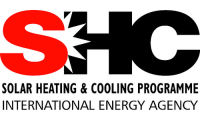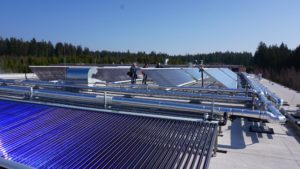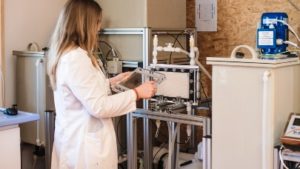New IEA Task for Solar Process Heat
August 8, 2011
At their meeting in June, the Executive Committee (ExCo) of the International Energy Agency (IEA) gave green light to a new task for solar process heat. The IEA-SHC (Solar Heating and Cooling) Task 49 – “Solar Process Heat for Production and Advanced Applications“ – will start in January 2012 and run for four years. The now rough outline of the task will be further specified in a second “Task Definition Meeting“ at the Solar World Congress in Kassel, Germany, on 2 September 2011. Task participants will then take the suggestions made by the ExCo to spell out the activities for solar process heat in more detail.
The new process heat task will draw from the conclusions and findings of the former task on process heat, the IEA-SHC Task 33, which ran between 2004 and 2007.
Subtask A will be dedicated to the development of new collectors for process heat applications – especially at high temperatures. “We need to work on concentrating systems, such as small parabolic troughs for rooftop systems and Fresnel collectors. We also require systems capable of producing steam directly inside the collector,“ says Christoph Brunner of AEE Intec, Austria, who is the Operating Agent of IEA SHC Task 49. Responsible for subtask A will be Dr Elmar Frank from SPF Rapperswil, Switzerland.
Subtask B may be the one for which progress since the last task has become the most apparent. It deals with integrating solar systems into industrial processes. The subtask requires close cooperation with the potential customer, with the installers of the process equipment and with the suppliers of the related machinery. Several partners have shown their interest in participating in the task, Brunner says, but names will not be published before the meeting in September.
And, subtask B is as much about adapting solar to processes, as it is about adapting processes to solar. For example, many food industry processes, such as cheese-making, unfreezing of ingredients or pasteurisation, are done in batches. Heat demand is irregular and high heat losses are common, when the heat used for the product is not reabsorbed while it cools down. Taking a closer look at those processes in a so-called “pinch analysis” can result in higher energy efficiency and make them more suited for solar energy systems. “The pinch analysis for solar process heat was developed in Task 33,“ Brunner says – which means the new task has seamlessly incorporated the results of the former one. Operating agent for subtask B will be Bettina Muster of AEE Intec, Austria.
Sub task C will work on the development of design guidelines for solar process heat applications, case studies and the dissemination of the results. It will be coordinated by Dr Werner Platzer of the Fraunhofer Institute for Solar Energy Systems (ISE), Germany. To facilitate the planning of solar process heat applications, a numeric simulation tool is to be developed and a standardised method implied. The sub task C group will also work on a compendium about solar process heat and gather data from existing projects as a first basis.
More Information:
http://www.iea-shc.org (Task 49 has not yet appeared on the website)
Fraunhofer Institute for Solar Energy Systems (ISE): http://www.ise.fraunhofer.de/areas-of-business-and-market-areas
AEE Intec: http://www.aee-intec.at
SPF Rapperswil: http://www.solarenergy.ch


